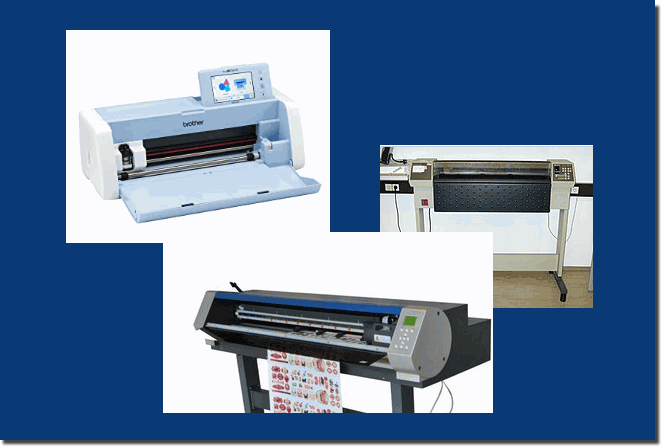Many wonder about the difference between a plotter and a plain printer!The plotter is also a device that is used to put something from the computer onto a sheet of paper, except that here pens are used instead of ink cartridges and ink cartridges. Contents: 1.) ... Difference between plotter and printer!
|
| (Image-1) The plotter! |
 |
2.) Further technical considerations for plotters and printers!
Both a plotter and a printer are output devices used to transfer digital information to physical media. However, there are some important differences between the two:1. How it works:
- A printer usually uses inkjet or laser printing technologies to print text, images or graphics on paper or other media.
- A plotter, on the other hand, uses pen or jet technology to draw lines on paper or other media. Plotters are commonly used for technical drawings, architectural plans, maps, and similar applications.
2. Scope:
- Printers are more versatile and are used for general printing of text, images and graphics in offices, homes and other environments.
- Plotters are widely used in technical fields such as architecture, engineering, geographic information systems (GIS) and design where precise line drawings are required.
3. Resolution and Precision:
- Printers are usually designed for high resolution for printing text and images.
- Plotters are specialized in drawing precise lines and geometric shapes with high accuracy. They often master very large formats and can depict fine details.
4. Size and Speed:
- Printers come in a variety of sizes, from small desktop models to large industrial printing machines. They can usually print relatively quickly.
- Plotters are typically larger and can be slower than printers due to the need to draw precise lines, especially on complex drawings.
Info:
Overall, printers are more suitable for general printing of text and images, while plotters are suitable for applications that require high-precision line drawings.
Overall, printers are more suitable for general printing of text and images, while plotters are suitable for applications that require high-precision line drawings.
Of course, here are some other technical considerations for plotters and printers:
1. Media Types and Sizes:
- Printers can typically handle a variety of media types and sizes, including various types of paper, labels, transparencies, and photo paper.
- Plotters are often aimed at special media such as paper rolls and can process large formats up to several meters wide. You can also draw on materials such as foil, fabric or plastic.
2. Color Printing:
- Many printers are capable of offering color printing, either through the use of color ink cartridges or through the use of color laser printing technology.
- Plotters are usually specialized in black and white printing, but there are also color plotters. However, most plotters use separate colors (e.g. cyan, magenta, yellow, black) to create colors by mixing rather than using pre-made color cartridges.
3. Software Integration:
- Printers are often seamlessly integrated with a variety of software applications, including word processors, graphic design software and CAD programs.
- Plotters are often used with specialized software tailored for technical drawings, CAD design or GIS applications. This software often allows detailed control over the creation of lines and geometric shapes.
4. Maintenance and running costs:
- Printers need regular maintenance e.g. B. by replacing ink cartridges, cleaning printheads and aligning prints.
- Plotters also require maintenance, but often less frequently as they are less susceptible to ink contamination. However, operating costs for plotters can be higher, especially for large formats and specialty media.
5. Compatibility and Connectivity Options:
- Printers can be connected to computers or networks via various interfaces such as USB, Ethernet, Wi-Fi and Bluetooth.
- Plotters can also be connected via these interfaces, but are often found in industrial environments where special interfaces such as RS-232 or GPIB are used to communicate with other devices.
Info:
These technical considerations help to better understand the different requirements and possible uses of plotters and printers.
These technical considerations help to better understand the different requirements and possible uses of plotters and printers.
FAQ 56: Updated on: 17 April 2024 22:12
